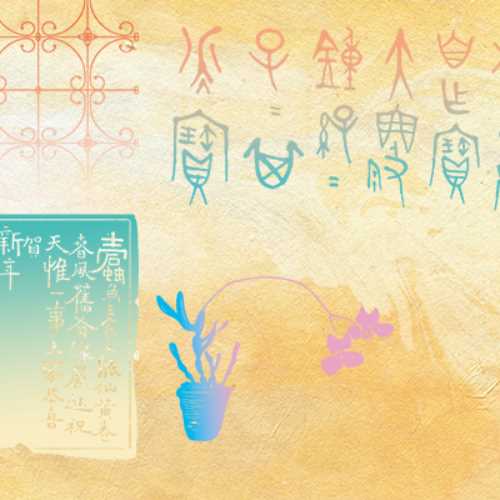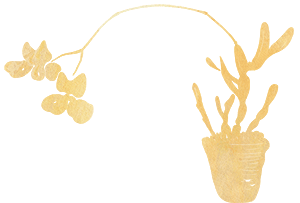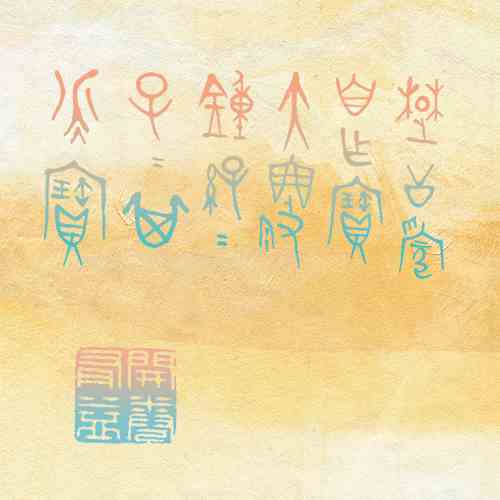This study represents the works of serious men, whose essays, poems, books, and paintings embody their ambitions. Shi Qiong-Fang's "Chong Wen Academy examination paper" and Ye Ying-Xiang's SAN SHI JIAN SHOU LU signify the authors' firm determination to study. Furthermore, Wei Ching-Te's emulation of Su Shi's calligraphic scripts, Xie Xing-Lou's Calligraphic Transcription of Gong Ding-An's Poems, and "The Tigers" painted by Zheng Kun-Wu all convey the artists' passion for sinology. Hong Qi-Shen's JIHEZHI POETRY COLLECTION and Huang Chun-Qing's QING YUAN POETRY COLLECTION are also filled with ambition!
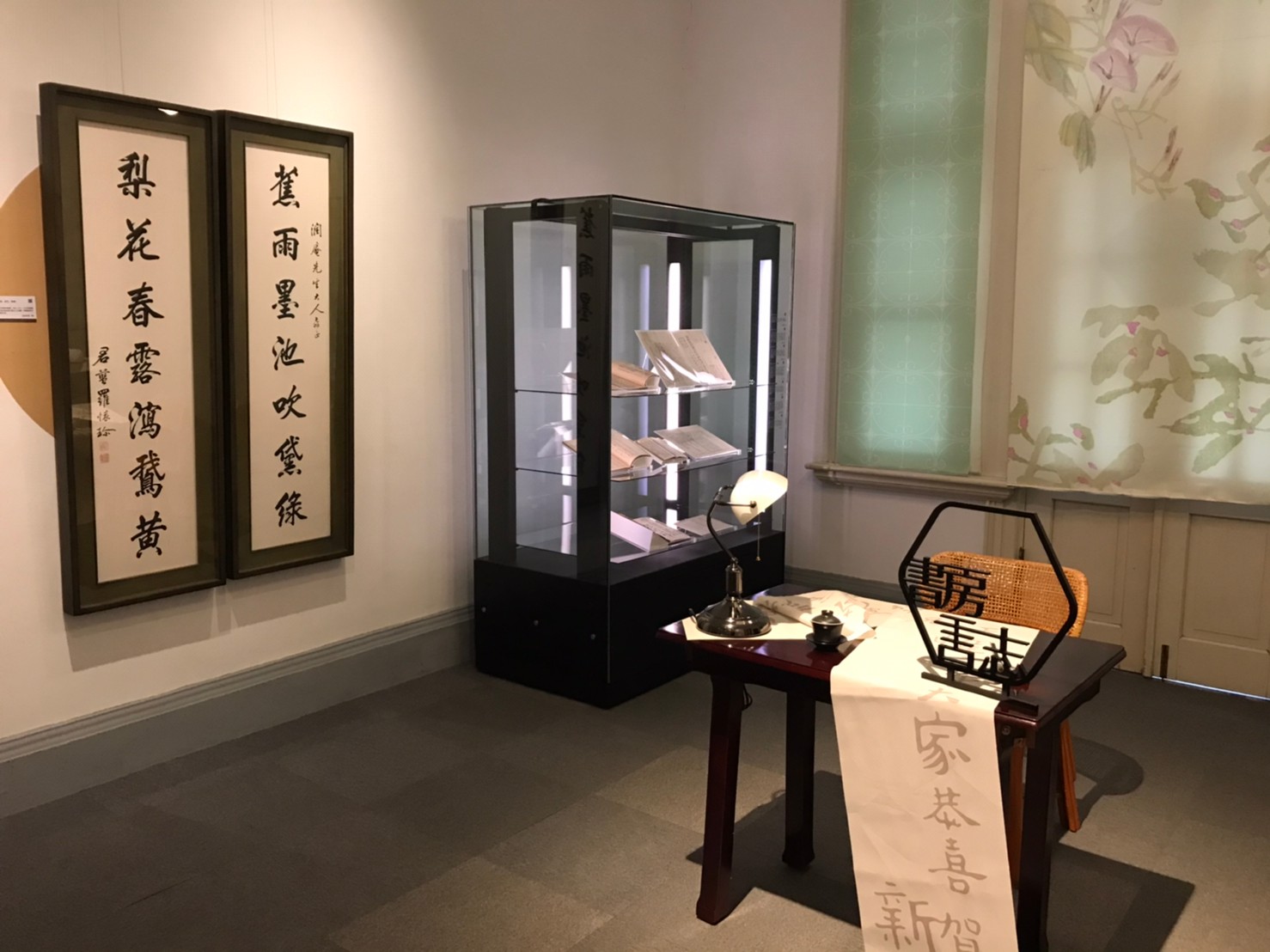
𓇬 𓇬 𓇬
 |
🖌 Chou Ting-Shan's "Copy of Shi Shu's 'Utopia' in Semi-cursive Style"
|
𓇬 𓇬 𓇬
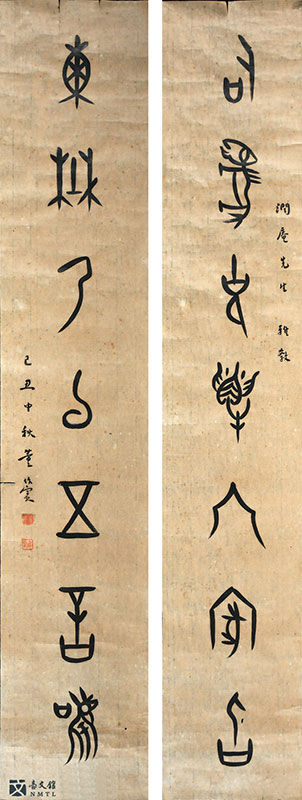
🖌 Dong Zuo-Bin's "Sima Tan & Meng Jiao" in oracle bone script style
This antithetical couplet means "Sima Tan spoke of six philosophical lineages; Meng Jiao was famous for his five-character poems." Sima Tan categorized the various schools of philosophy in pre-Qin Dynasty China (221 BC) into six schools: Yin Yang, Confucianism, Mohism, School of Names, Legalism, and Tao Te. Meng Jiao was good at five-character poems. In 1949, Dong Zuo-Bin wrote down characters in oracle bone style and gave them to Wei Ching-Te as a gift. Dong did not deliberately try to hone his skills by imitating famous works. His style is delicate, elegant, and serene.(Donated by Wei Ching-Te's family)
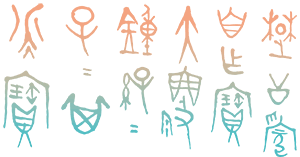
𓇬 𓇬 𓇬

🖌 Wu Cheng-Yen's collected sentences in oracle bone script style
This work was written by centering the brush tip to the center of the brush hairs and controlling the pressure applied to the brush. Then by turning the brush tip, the lines were made slim yet powerful. In addition to Dong Zuo-Bin, who studied ancient writing systems, Wu Cheng-Yen was among the calligraphy artists who came to Taiwan after the war. His works in oracle bone style are also worth examining.(Donated by Wei Ching-Te's family)
𓇬 𓇬 𓇬

🖌 Wu Cheng-Yen's copy of inscriptions of Chu Gong Bell
"楚公為自作寶大棽鐘,孫子其永寶。楚公鐘"(translation) In 1949, Wu imitated "Chu Gong Bell" in the slim yet firm small seal style. The characters are smooth and natural in combination with a signature in semi-cursive style. The entire work emanates harmony and presents the powerful calligraphic strength of ancient times.(Donated by Wei Ching-Te's family)
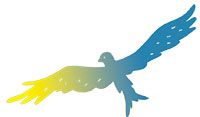
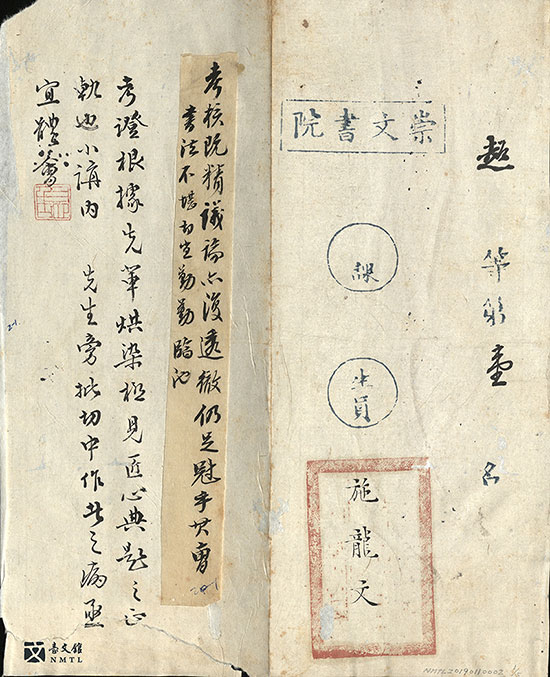
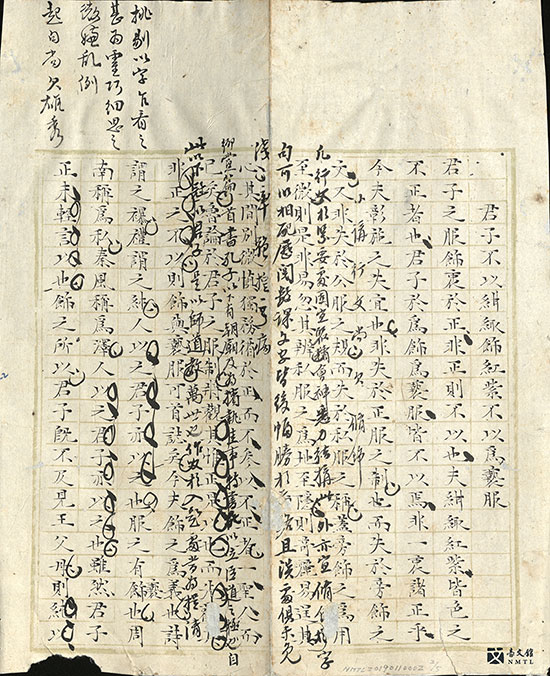
🖌 Chong Wen Academy examination paper by Shi Qiong-Fang
Shi Qiong-Fang's Chong Wen Academy examination paper ranked 1st in the superior level. Shi Qiong-Fang and his second son were the only father and son qualified as imperial scholars in Taiwan. The Assignment section contained one essay assignment and one poetry assignment. This roll was completed before Shi Qiong-Fang was accepted into the imperial college at 23 years old (1837).(Donated by Yang Wen-Fu's family)
𓇬 𓇬 𓇬
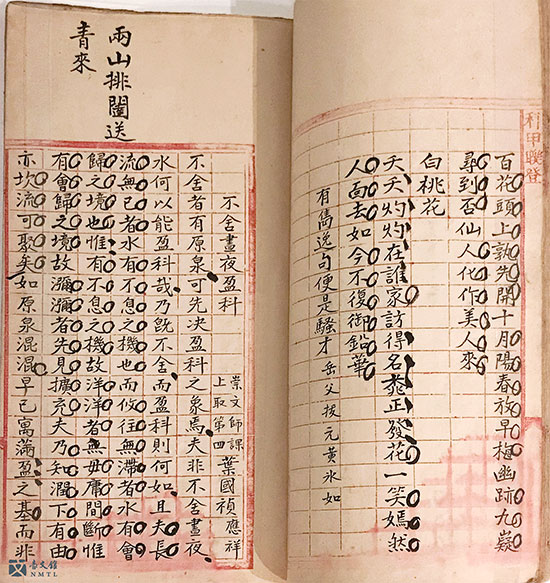
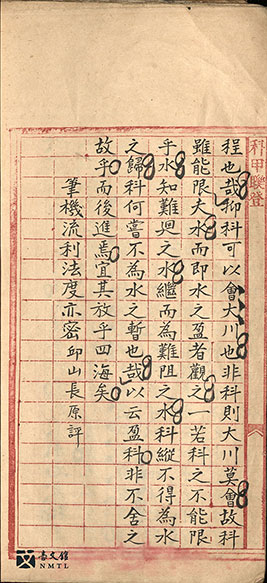
🖌 THREE GENERATIONS OF WRITINGS by Yeh Ying-Xiang
In early spring 1895, Ye Ying-Xiang accidentally found the old Chong Wen and Hai Dong Academy writings by his grandfather and father. Thus, he copied the poems and essays made by his grandfather, father, and himself and compiled them into a book called THREE GENERATIONS OF WRITINGS.
In the Qing Dynasty, government officials were selected based on their eight-legged essays, and the academy assignments were practices in this style. The title "Persistence Day and Night" was written for an exam at Chong Wen Academy, where he ranked 4th. At the time, Qiu Feng-Jia was a principal at Chong Wen Academy and his comment, "smooth writing, and its content is tightly structured and coherent," was written around 1890.(Donated by Huang Dian-Quan's family)
𓇬 𓇬 𓇬
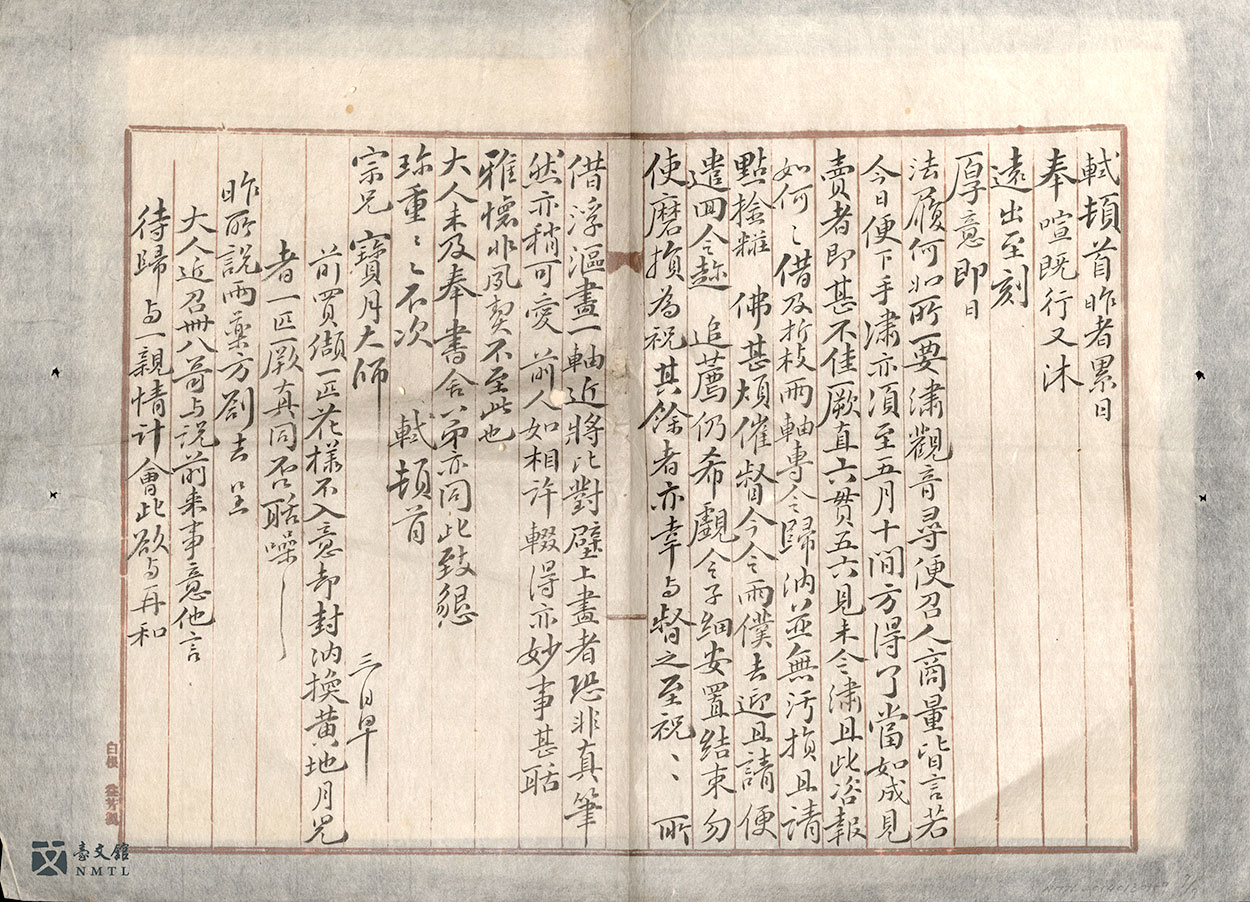
🖌 Wei Ching-Te's copy of Shu Shi's "Feng Xuan Writing"
"Feng Xuan Writing" is a letter written by Su Shi to Shi Wei-Cheng. It was written around 1059 when Su Shi was 23 years old. It is generally considered one of Su Shi's existing early works, like "Meizhou Fenghou Writing." The style is similar to that used in Wang Xi-Zhi's "Lantingji Xu," which is elegant and powerful. This is an imitation work made by Wei Ching-Te. The proficient strokes are presented in semi-cursive style. The connections between strokes are also smooth and without hesitation.(Donated by Wei Ching-Te's family)
𓇬 𓇬 𓇬
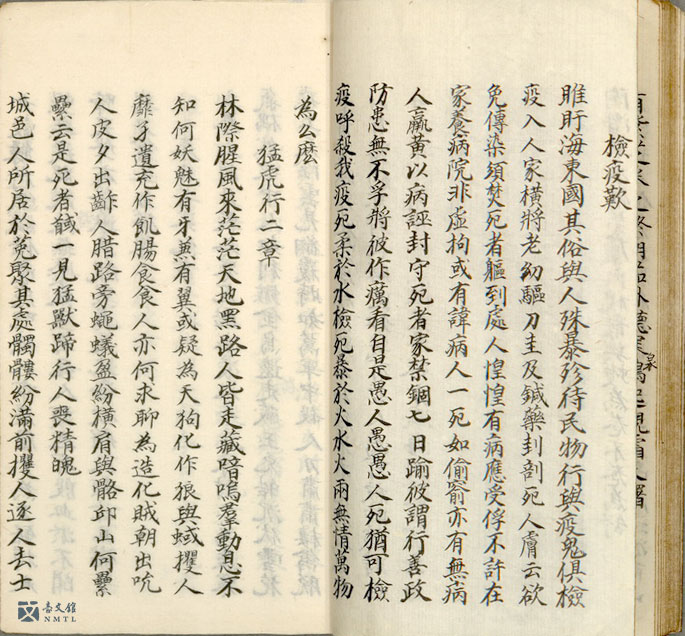
🖌 JIHEZHI POETRY COLLECTION: PI XI by Hong Qi-Sheng
JIHEZHI POETRY COLLECTION: PI XI contains seven rolls. It is a collection consisting of poems from 1895 (the first year of Japan's colonial occupation of Taiwan) to 1905. The first part features ancient long poems such as "Defeated Soldiers and Lost Land," "Traitors Offering Boats", "Taiwan Falling into Enemy Hands" and "Destruction of Douliu." These poems describe the ruthlessness of the war and the harm caused to the people. There are also poems that criticize the new regime, such as "Cruel Measures Against Diseases" and "Fierce Tiger." "Pi Xi" means drying one's untidy hair at sunrise, symbolizing the poet's moral rectitude. His different philosophy of life drove his criticism of the ruling regime.(Donated by Hong Xiao-Ru)
𓇬 𓇬 𓇬
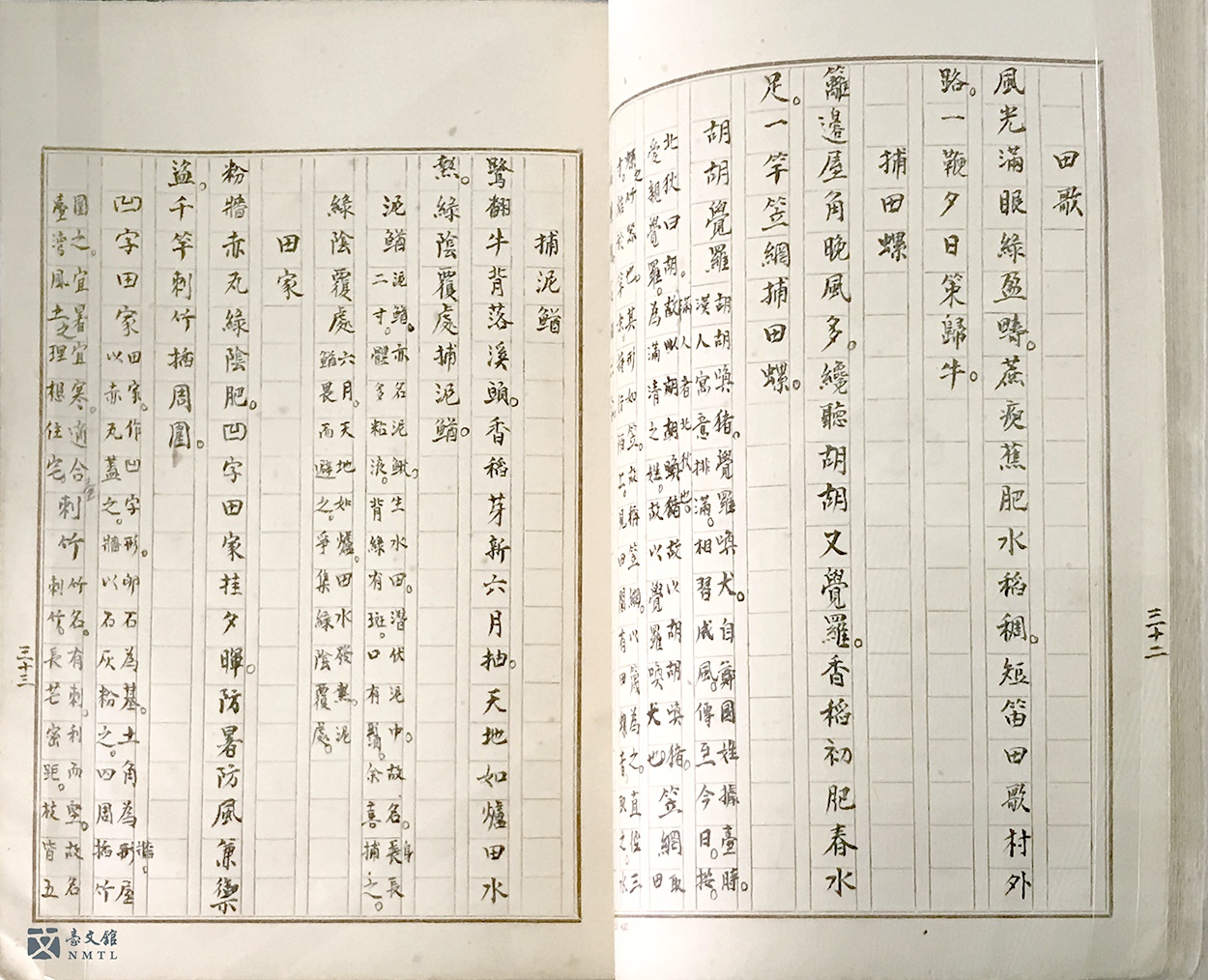
🖌 Huang Chun-Qing's QING YUAN POETRY COLLECTION
Huang Chun-Qing was a poet from the Ying Poetry Club. He and his son Huang De-Shi were both famous in the literary scene. QING YUAN POETRY COLLECTION features poems that illustrate life, criticize the imperial examination, and describe local culture/scenery. Taking "14 Poems of Tian She Lang" for example, the realistic and vibrant poems describe the poet as a person from a farming family, and depict northern rural scenery and activities such as herding cows and ducks, capturing river snails and pond loaches, and keeping pigs.(Donated by Huang De-Shi)
𓇬 𓇬 𓇬
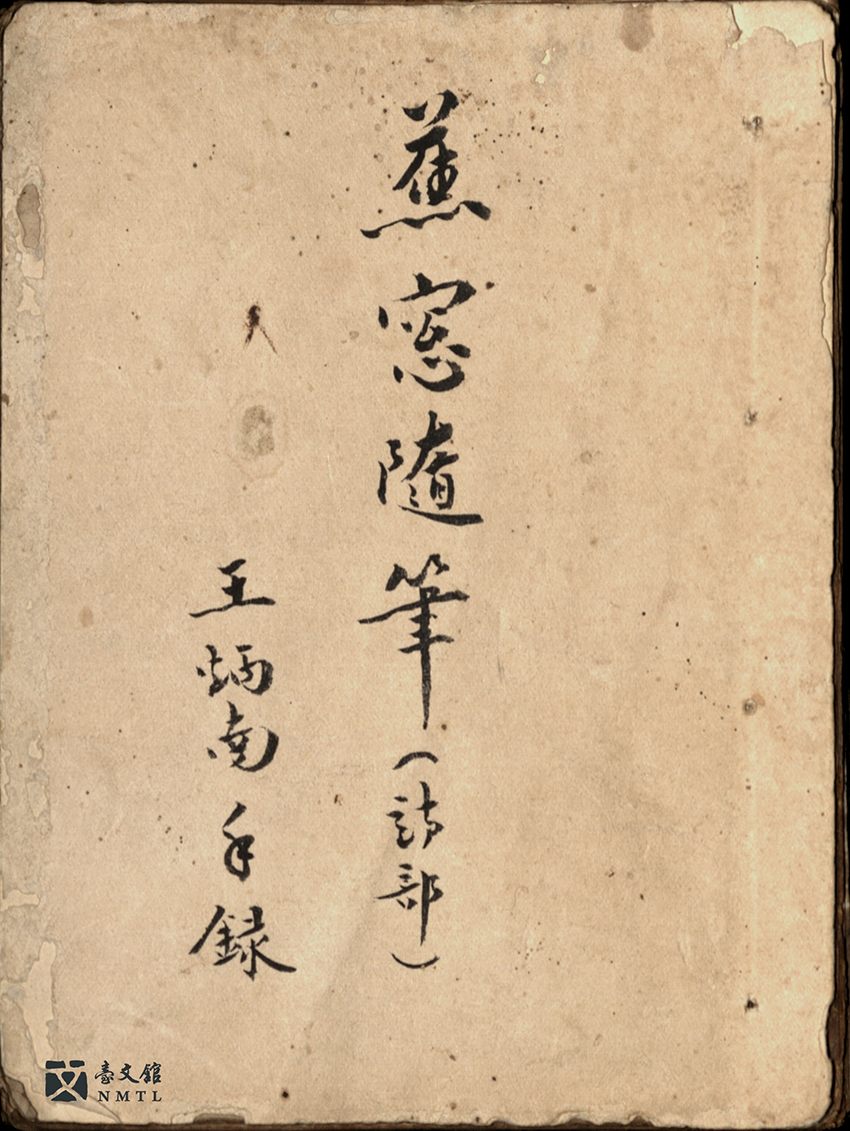
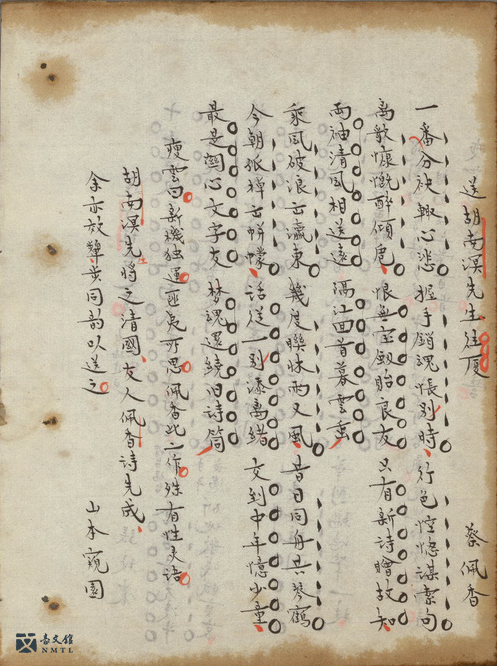
🖌 Wang Bing-Nan's ESSAY BY THE WINDOW
ESSAY BY THE WINDOW is a 300-page poetry collection coordinated by Wang Bing-Nan. It features poems written by poets from across Taiwan, including Hung I-Nan, Huang Zhi-Ting, Zhou Shao-Zu, Zhuang Yun-Cong, Zhao Yun-Shi, and Luo Xiu-Hu. There are also works from Japanese poets living in Taiwan. These poems were probably copied from TAIWAN DAILY NEWS, TAINAN NEWS, AND TAIWAN NEWS. The cover of the book is inscribed with "a collection of beautiful poems" by Northern Island Idler in the "Year of Kui-Mao". Thus, it can be deduced that these poems were from around 1903. Two eight-line and seven-character poems written by Nan Society's Cai Pei-Xiang were roughly written between 1902 and 1905. At the end of the poems are comments made by Chen Wei-Chuan.(Donated by Wu Chung-Ling & Wu Chung-Hsiung)
𓇬 𓇬 𓇬
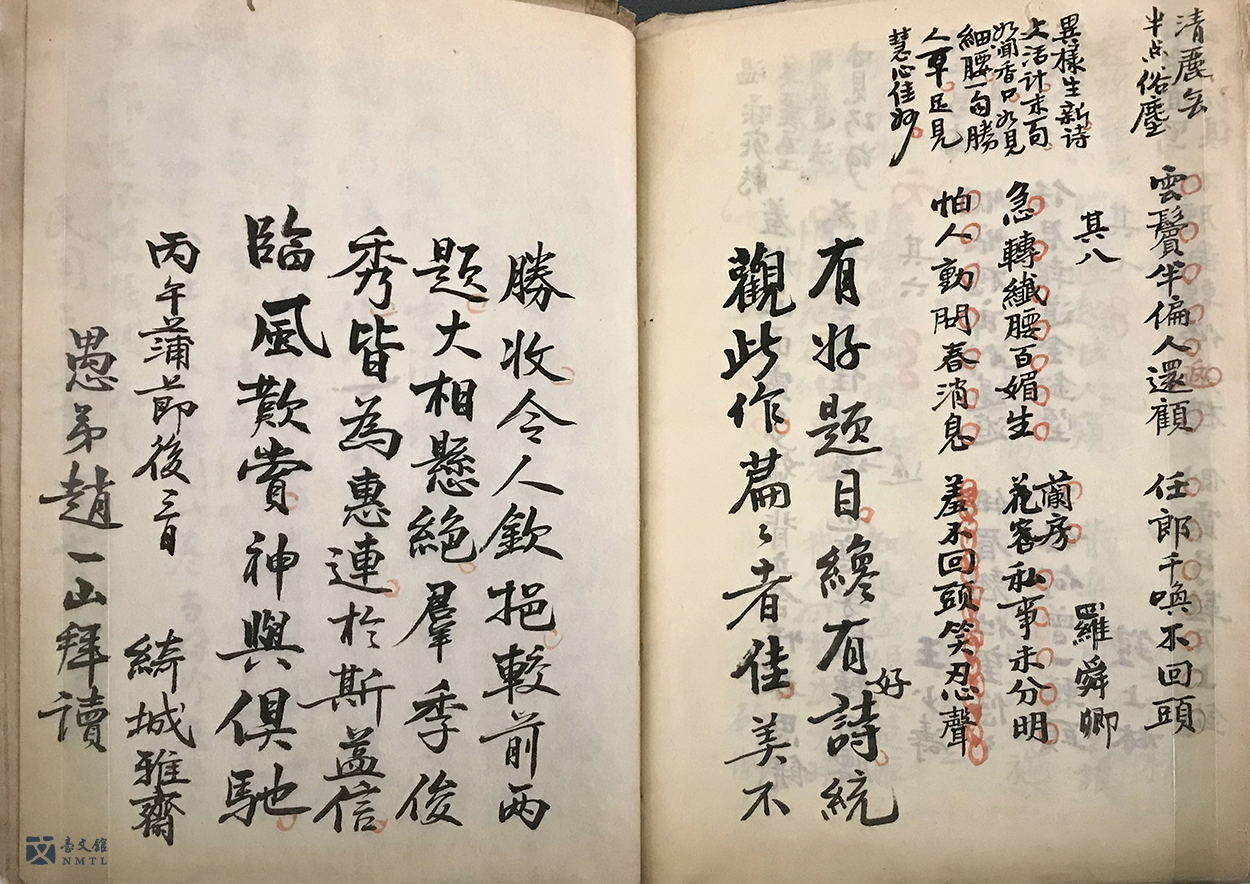
🖌 Zhao Yi-Shan's review in YONGNI POETRY COLLECTION
Yongni Poetry Society was founded in 1905. The members included Huang Chun-Qing, Wei Ching-Te, Wang Shao-Tao, Lau Khek-beng, Li Shuo-Qing, and Zhuang Yun-Cong. The group was active between 1905 and 1906. The members joined Ying Society after it was founded in 1909. The collection features ten sessions of poetry topics of the Yongni Poetry Society. The topic for the 10th session in 1906 was "beauty from the back," and the judge was Zhao Yi-Shan.(Donated by Huang De-Shi)
𓇬 𓇬 𓇬
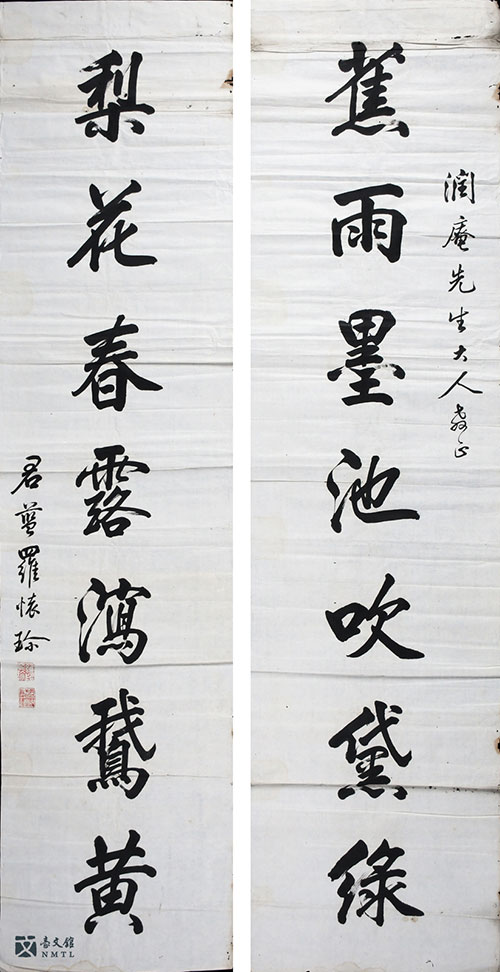
🖌 Luo Huai-Jan's "Couplet of 'Rain and Pear Blossoms' in Semi-cursive Style"
"蕉雨墨池吹黛綠,梨花春露瀉鹅黃"(translation) is a famous line. In the Japanese Colonial Period, Luo Huai-Jan wrote the line and gave it to Wei Ching-Te as a gift. Written in semi-cursive style, the characters were inspired by Zhao Men-Fu's square-like style and Yan Zhen-Qing's calligraphic strength. The characters are vigorous and beautiful. The work depicts scenery in the spring. The two verses correspond with each other (E.g., part of the speech, color, plant), making it suitable for inclusion in this study.(Donated by Wei Ching-Te's family)


